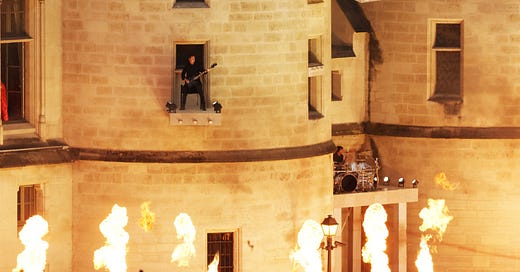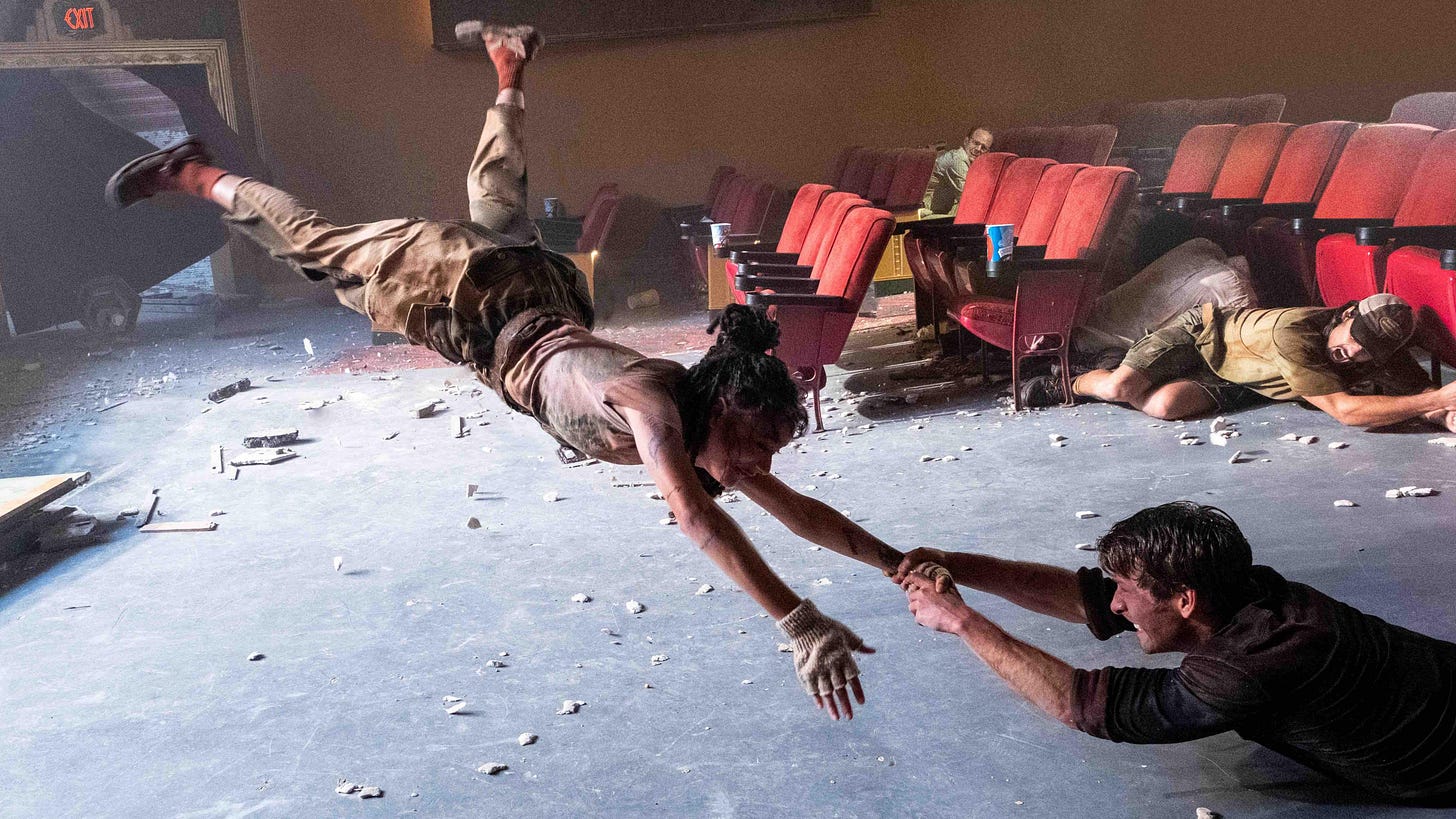Dear reader,
Recently, tragedy struck my family and the many others who knew and loved Jim Hilkene.
Jim was my father’s lifelong friend, their roots tracing back to the third grade. Best men at each other’s weddings, Jim and my father even worked at the same company for nearly two decades. My dad has known Jim longer than he has known my mother, longer than he has known me or my sister. As I reflect on my own friendships, I cannot fathom a stage of my life in which they are no longer by my side.
A proud graduate of Clemson, Jim was an avid Tigers fan. While my loyalties may lie elsewhere in the ACC — Pitt is the wellspring from which many of my life’s most cherished relations continue to blossom — I can’t help but keep a closer eye on Dabo Swinney, Cade Klubnik, and the rest of the Clemson Tigers as the NCAA Football season rapidly approaches.
I always knew Jim as a tall and garrulous figure. He was always smiling, and he was always at the center of my dad’s most shocking and hilarious stories. Although it had been several years since I had seen Jim in person — I was more likely to find him within the boxy confines of a Microsoft Teams call, offering a friendly hello as I passed my father’s at-home office — I always felt his presence via his significance in my dad’s life. Everyone deserves to have a friend like Jim. I am lucky to say I have several.
Like Twisters’ Tyler Owens and his squad of misfits, Jim cared about this country and the people who inhabit it. He saw America’s natural beauty wherever he went, introducing my dad to several of his personal favorites. When my family and I vacationed in Lake George, NY during my childhood, we did so per Jim’s recommendation. I still remember the fresh smell of our cabin at Depe Dene Lakeside Resort, as well as the deep blue water just a few feet away. I remember jet skiing with my dad, a twisted combination of adventure and terror twisting my stomach into knots with every motorized leap across the lake. It is not unlike the painful sensation I felt last Thursday when my sister first called me with the awful news of Jim’s passing. I have seen my father endure so much over the last several years; the loss of such a special friend is a needless addition to that list.
It has not been easy to finish this month’s newsletter in the wake of Jim’s passing, but Cory’s Reads #38 is dedicated to Jim Hilkene. It will stand as a monument to him and his memory. If willing and able, please consider donating to the Lake George Association in Jim’s honor.
The following is an unedited version of Cory’s Reads #38. Its ideas seem rather insignificant to me as of late, but I hope you enjoy, as always.
Thank you for reading. Tell your friends and family that you love them.
I have never been drawn to the Olympics. Few of the sports interest me, and national pride has never come naturally to me, particularly in the last decade or so of American politics. I have consumed only a few seconds of Olympics coverage, outside of the opening ceremony, which I watched in its entirety.
At least for this ignorant American, the ceremony effectively captured French history and culture. I was particularly struck by the performance from heavy metal icons Gojira, whose face-melting rendition of 19th-century French anthem “Ah! Ça Ira” stirred up a brief modern-day satanic panic. That kind of stupidity should not be taken seriously, but it does highlight precisely what made Gojira’s appearance at the Summer Olympics in Paris so notable. Heavy metal is rarely incorporated into our shared sense of what is artistically or culturally relevant, not to mention valuable. That became increasingly evident when the American telecast on NBC featured Kelly Clarkson and Mike Tirico speaking over nearly the entire performance. Although the broadcasters may have some responsibility to contextualize the ceremony for American viewers, their constant narration demonstrated a general lack of cultural awareness amongst American audiences.
The United States is particularly guilty of disregarding the arts, and I wonder what kind of cultural contributions we will choose to highlight when the Olympics comes to Los Angeles, CA in 2028. There are only so many times you can ask Robert Downey Jr. to dress up like a comic book character.
Of course, Americans have the unique luxury of showcasing our sense of culture every single day of the year, force-feeding it to the rest of the globe in just about every form imaginable. With such a prominent position on the global stage, the United States is certainly not without popular culture, although our shared grasp of that culture is dubious at best.
Culture does tend to thrive most naturally at the regional level, and in that sense the U.S. is filled with several fascinating subcultures. Any attempt to capture American culture writ large is almost surely in vain, but there are countless textured portrayals of the country’s regional cultures, and one of them has caused quite a storm at the box office this summer, amassing over $310M worldwide.
Lee Isaac Chung’s Twisters is a surprisingly evocative film, embellishing its prototypical blockbuster trappings with a detailed depiction of the American South. Twisters may be an effects-driven spectacle first and foremost, but it also functions as a legitimate slice of Americana, touring locales across “Tornado Alley” with surprising sensitivity. Chung’s own Southern roots likely account for the film’s sense of compassion, which extends beyond its featured players to the entire communities that serve as the film’s backdrop. Twisters may offer a rather traditional vision of American culture — its countrified official soundtrack functions as a kind of victory lap for the music genre, perhaps America’s strongest cultural export — but in its more tender moments, it does capture the genuine hardship that faces those who live in the path of these unstoppable natural disasters.
Chung similarly pays tribute to the sense of camaraderie and supportiveness that stems from these shared experiences, even retrofitting Tyler Owens (Glen Powell, a seeming mainstay of this newsletter) and his posse with an admirable knack for on-the-ground charity and restoration efforts. It is a simple bit of characterization that lays the groundwork for the film’s broader concerns of corporate exploitation amidst tragedy. Twisters understands that spectacle may be what brought you to the cinema — the film climaxes inside a movie theater, the screen torn to shreds by an oncoming tornado, now freshly captured in frame — but that its human elements ultimately determine its success.
Despite its more commercial aims, Twisters renders a touching portrait of an American community. And because it was shot entirely in Oklahoma, the economic boon for the region cannot be understated. Still, Oklahomans seem split on the film’s merits.
Writing for the Oklahoma City Free Press, critic Brett Fieldcamp described the film’s depiction of the Sooner State as “gratingly pandering and concerned with an unearned, Hollywood hallucination.”
Fieldcamp also confronts the most ludicrous aspect of Twisters, namely that the film would have you believe that tornadoes are a relentless scourge upon the lives of helpless Oklahomans:
Save for one, single, unexplained mention of the letters “NWS,” the National Weather Service doesn’t seem to exist in the world of “Twisters.” There’s never a mention of a watch or a warning. No one in any town in the film has a phone alert of any kind or even seems to know that you can track weather or that storms are predicted with remarkable accuracy in the modern age.
In “Twisters,” tornadoes spawn out of absolutely nowhere, with no warning or expectation, even by the movie’s main character, Kate, who is sold as some kind of supernatural “tornado whisperer” that tracks wind patterns and can pinpoint exactly when a tornado will drop just by feeling.
Any film with Twisters’ commercial ambition will only go so far in balancing its themes and its thrills, but I do think there are valid anxieties surrounding climate change and corporate greed bubbling beneath the surface of Twisters. Those concerns do not invalidate Fieldcamp’s disapproval of the film’s exaggerated sense of reality, but they do make Twisters more worthwhile than most other blockbuster fare. This newsletter was almost an excoriation of the admittedly hilarious yet revoltingly shallow Deadpool & Wolverine, but one can only complain about the MCU so many times before turning into “Old Man Yells at Cloud.” That harbinger of cultural doom — er, film — may occupy Americans’ attention spans more than Twisters ever could, but I have to believe the latter is more emblematic of the culture itself.
After all, Sally Ray —Director of Domestic Funds at the Center of Disaster Philanthropy — endorsed the film as a valid means of learning about “tornadoes, Oklahoma and, more importantly, about how twisters impact a community and its people.”
To function as Americana is to embrace tragedy as essential to the American experience.
It is an unfortunate truth, but many of the greatest American films of the last century preoccupy themselves with 9/11, the Iraq War, police brutality, or mass shootings. The devastated communities in Twisters may be the victims of natural disaster, but they are not unlike the scenes out of Uvalde or Ferguson in recent years. Horrific images from these incidents and many others are emblazoned in our national memory, and we can only hope that Kamala Harris and Tim Walz, having introduced just a modicum of normalcy to the 2024 presidential election, work to rewrite those darkest pages of the American story.
In truth, I feel most connected to my national identity when I watch films like 25th Hour and Fruitvale Station, but the specter of calamity looms over countless American films, including those less explicitly concerned with real-life events. M. Night Shyamalan’s Trap, for example, evokes anxieties around domestic terrorism, narrowing our sense of safety in public spaces down to a single sadistic killer. In Shyamalan’s latest claustrophobic thriller, Cooper (Josh Hartnett) may be evil beyond comprehension, but his careful surveying of his surroundings at the fictional Tanaka Arena may feel all too familiar to anyone who has ever feared for their life at a large public gathering. By pairing that tension with a mainstream pop concert in the vein of Ariana Grande or Lady Gaga (the fictional Lady Raven is played by the director’s own daughter Saleka), Shyamalan reminds us of the terrors that rest just beyond the cozy confines of everyday life in the US.
American culture is rich, but fragile. It is accessible, yet it remains a mystery. By the time Luke Combs steps forward to sing “Ain’t No Love in Oklahoma” at SoFi Stadium in 2028 — the two offsite venues for that Olympics will be in Oklahoma City, oddly enough — let us hope that steps have been taken to not only refine what it means to be an American, but to protect our precarious way of life.
Keep up with the rest of my work on Letterboxd at @creid61 or on Instagram at @coryreid6125.
You can also support my work over at Buy Me a Coffee.





